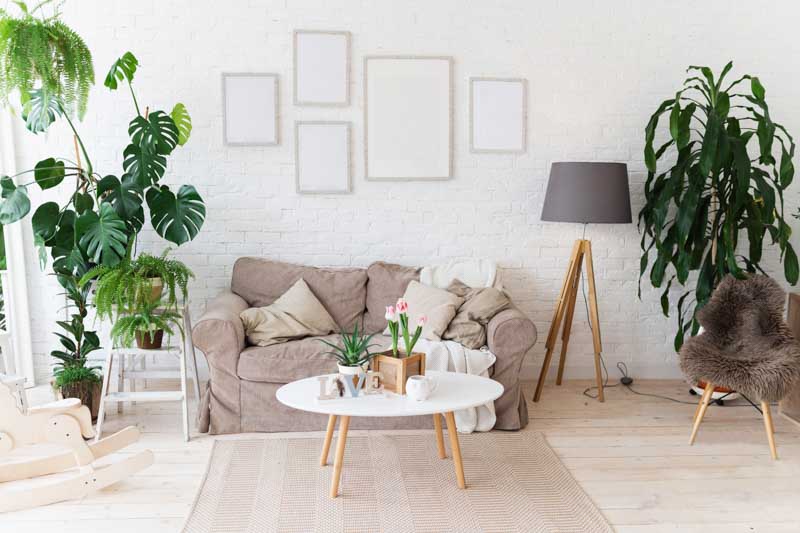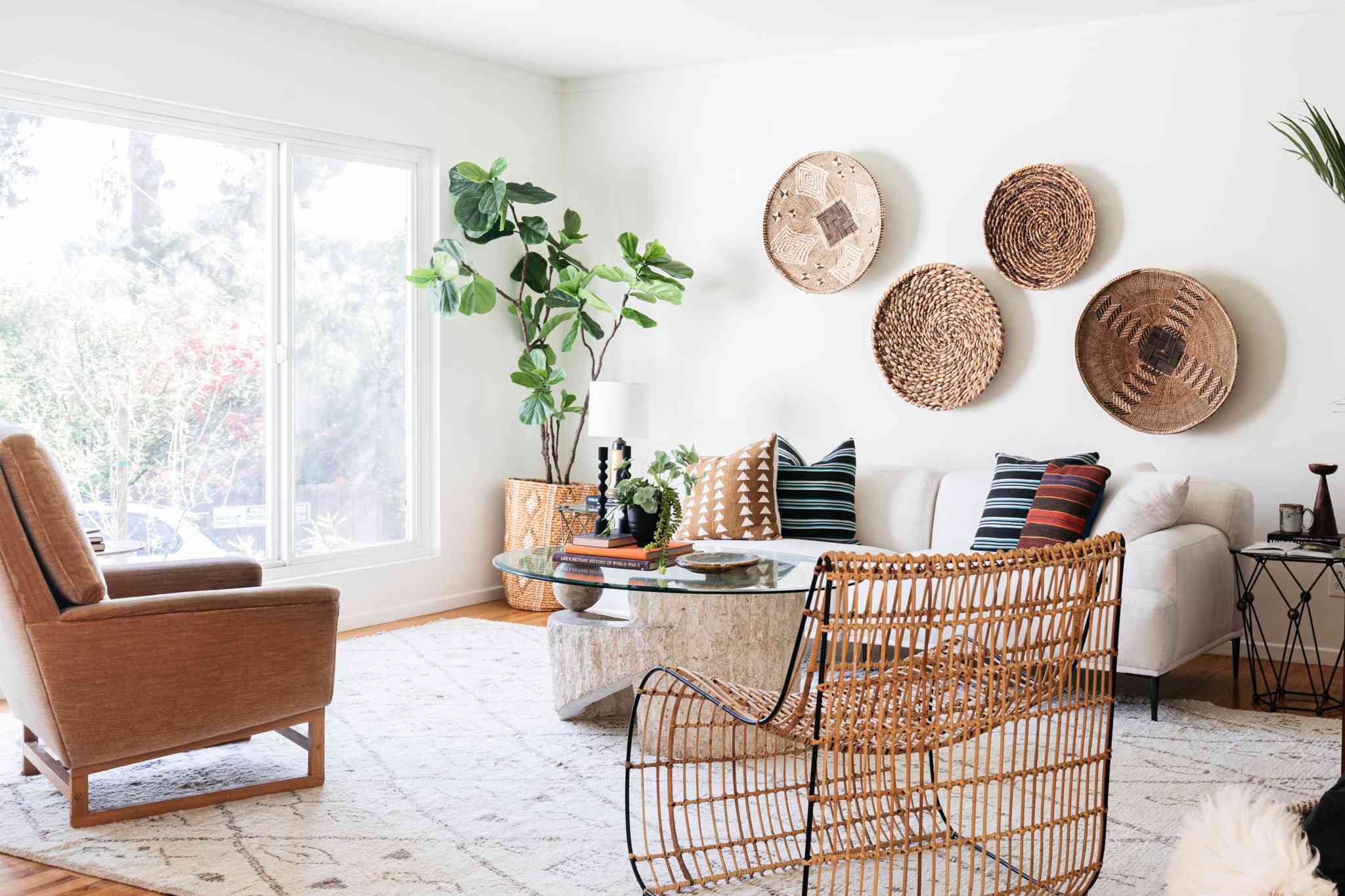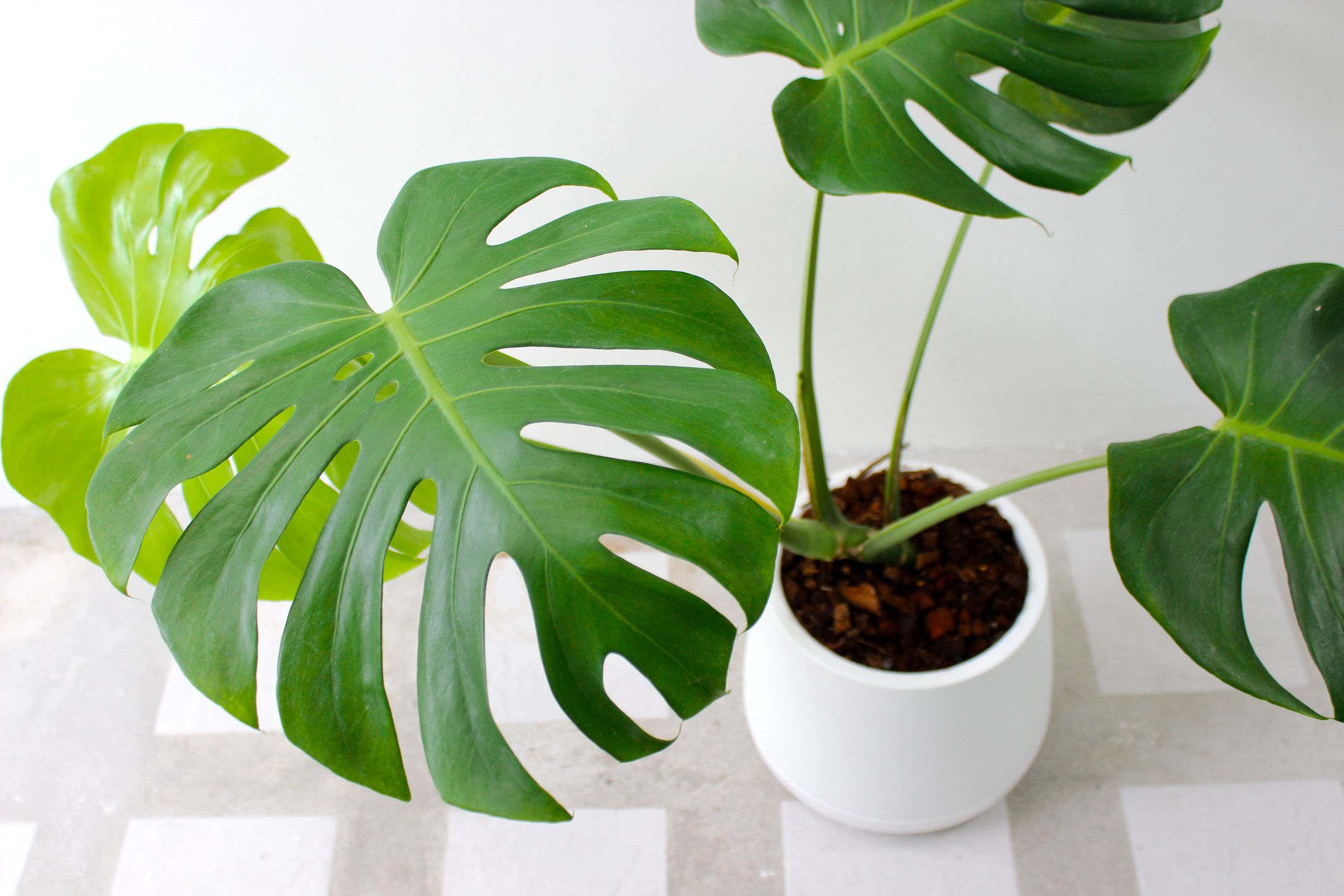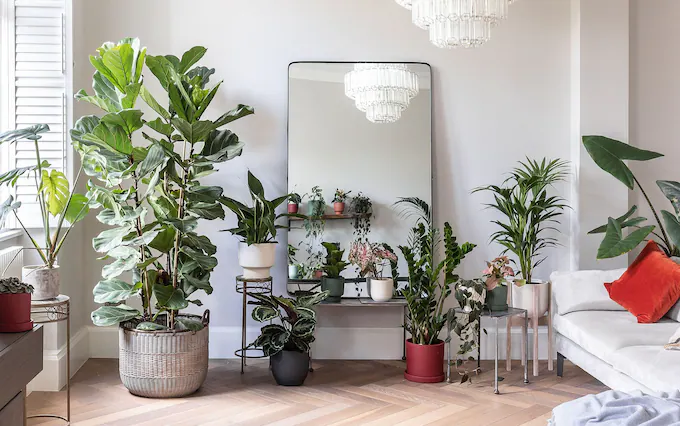Contents
Introduction
If you’re looking to breathe new life into your living room, adding plants is one of the easiest and most effective ways to do it. Plants do more than just look pretty—they can transform your space into a more inviting and enjoyable place to spend time. Imagine coming home after a long day to a cozy living room with lush, vibrant greenery that instantly makes you feel relaxed and at ease. Sounds great, right?
Not only do plants add a splash of color and texture, but they also offer some amazing benefits that go beyond mere aesthetics. For starters, many houseplants help purify the air, filtering out toxins and creating a healthier environment. They can also boost your mood and reduce stress, making your living room a more pleasant and calming retreat. Plus, caring for plants can be a rewarding hobby, giving you a sense of accomplishment and connection to nature.
When choosing plants for your living room, there are a few things to keep in mind. Think about how much natural light your space gets—some plants thrive in bright, sunny spots, while others are perfectly happy in lower light conditions. Consider the size of your room too; you don’t want to overcrowd it with plants, but rather select ones that fit well and complement your existing decor. And, of course, think about how much time you’re willing to spend on plant care. Some plants are super low-maintenance and practically take care of themselves, while others might need a bit more attention.
In this guide, we’ll explore a range of fantastic plants that are perfect for any living room. From easy-care options to eye-catching statement pieces, you’ll find something that suits your style and space. We’ll also share tips on how to style your plants for maximum impact and how to keep them healthy and thriving. Ready to turn your living room into a green oasis? Let’s dive in!
Factors to Consider When Choosing Living Room Plants
Choosing the perfect plants for your living room might seem like a simple task, but there are a few key factors that can make all the difference. Here’s a friendly guide to help you pick the best plants that will thrive in your space and look fantastic doing it.
Light Availability
First up, let’s talk about light. Plants are like people—they have their own light preferences! Some plants love soaking up the sun and need lots of bright light to stay happy. Others are perfectly content with just a little bit of indirect light. To choose the right plant, start by figuring out how much natural light your living room gets. Is it sun-soaked all day, or does it only get a few hours of light? Once you know, you can match the plant’s light needs with your room’s conditions. If you’re not sure, there are plenty of plants that do well in low light, so don’t worry!

Space and Size Constraints
Next, think about the space you have. If your living room is cozy and compact, you might want to go for smaller or more compact plants. But if you have a spacious area, you can go big and bold with larger plants that make a statement. The key is to choose plants that fit well within your space without making it feel crowded. Consider how much room you have for plant stands, pots, and shelves to showcase your green friends.
Maintenance and Care Requirements
Let’s be real: not everyone has a green thumb or the time for intricate plant care. That’s why it’s important to pick plants that fit your lifestyle. If you’re looking for something low-maintenance, there are plenty of hardy plants that need minimal attention. On the flip side, if you’re ready to dive into plant care and enjoy a bit of routine, you might choose plants that need a bit more nurturing. Think about how much time you can dedicate to watering, feeding, and general plant upkeep.
Aesthetic and Design Considerations
Finally, think about how the plants will fit into your living room’s design. Plants come in all shapes, sizes, and colors, and they can really add to your room’s style. Whether you’re aiming for a modern, minimalistic look or a lush, tropical vibe, there’s a plant out there that will complement your decor. Look for plants that enhance the colors and textures of your room and create a cohesive look.
By considering these factors, you’ll be well on your way to selecting plants that not only thrive in your living room but also make it look absolutely stunning. Happy planting!
Top Picks for Living Room Plants
When it comes to choosing plants for your living room, the options can be overwhelming. But don’t worry—I’ve narrowed it down to some fantastic picks that cater to different needs and styles. Whether you’re looking for something low-maintenance, air-purifying, or just plain stunning, there’s a plant here for you. Let’s dive into the top choices that can help transform your living space into a green paradise.
Low-Maintenance Plants
If you’re not ready for a high-maintenance plant, you’re in luck. These low-maintenance beauties are perfect for adding some greenery without a lot of fuss.

- Snake Plant (Sansevieria trifasciata) This plant is practically indestructible. Its tall, sword-like leaves come in a variety of shades of green and can survive in low light. Plus, it doesn’t need frequent watering—just let the soil dry out between waterings, and it’ll be happy. It’s a great choice if you want something that looks sleek and modern with minimal care.
- ZZ Plant (Zamioculcas zamiifolia) The ZZ plant is another winner for those who want a no-fuss plant. With its shiny, dark green leaves and tolerance for low light and irregular watering, it’s perfect for busy or beginner plant parents. Just make sure it’s in well-draining soil, and you’re good to go!
- Pothos (Epipremnum aureum) Known for its heart-shaped leaves and trailing vines, Pothos is a versatile and forgiving plant. It can handle low light, though it thrives in bright, indirect light. It’s also easy to propagate, so you can grow new plants from cuttings. It’s ideal for hanging baskets, shelves, or draping over a plant stand.
Air-Purifying Plants
If you want your plants to do more than just look good, consider air-purifying options. These plants help clean the air, making your home healthier and fresher.
- Spider Plant (Chlorophytum comosum) The Spider Plant is not only a great air purifier but also a charming addition to your decor. Its long, arching leaves produce “babies” or plantlets that you can propagate easily. It thrives in a range of light conditions, making it a versatile choice for different spots in your living room.
- Peace Lily (Spathiphyllum) With its elegant white blooms and glossy leaves, the Peace Lily adds a touch of sophistication to any room. It’s excellent at removing toxins like formaldehyde and benzene from the air. Keep it in moderate light and ensure the soil remains consistently moist for the best results.
- Aloe Vera (Aloe barbadensis miller) Aloe Vera isn’t just for soothing sunburns—it’s also a great air purifier. Its thick, fleshy leaves are packed with gel that can be used for minor burns and skin care. It prefers bright, indirect light and minimal watering, making it a practical and useful addition to your living room.
Statement Plants
For those who want to make a bold impact, statement plants are the way to go. These plants are all about adding drama and flair to your decor.
- Monstera Deliciosa (Swiss Cheese Plant) The Monstera’s large, split leaves make it a showstopper. It brings a tropical feel to your living room and thrives in bright, indirect light. It’s also quite forgiving if you occasionally forget to water it. Its dramatic appearance can be a real focal point in your space.

- Fiddle Leaf Fig (Ficus lyrata) The Fiddle Leaf Fig is known for its large, violin-shaped leaves and commanding presence. It’s a popular choice in modern decor for its sleek look and ability to fill empty corners. It does best in bright, indirect light and requires regular watering. Just be prepared to provide some TLC to keep those leaves looking their best!
- Rubber Plant (Ficus elastica) With its glossy, dark green leaves and upright growth, the Rubber Plant makes a striking addition to any room. It can grow quite tall, so it’s great for adding height and structure to your space. It prefers bright, indirect light and occasional watering, making it a solid choice for a statement plant.
Compact and Space-Saving Plants
If you’re dealing with a smaller living space, these compact plants are perfect for adding greenery without taking up too much room.
- Succulents and Cacti These plants come in all sorts of shapes and sizes, and they’re perfect for small spaces. Succulents and cacti are drought-tolerant and need very little water, which makes them ideal for windowsills or small shelves. Plus, their unique forms and colors can add a fun touch to your decor.
- Bamboo Palm (Chamaedorea seifrizii) The Bamboo Palm is compact and adds a lush, tropical feel without overwhelming your space. It’s great for filtering air and can thrive in low to bright, indirect light. It’s perfect for placing in corners or smaller areas where you want to add some greenery.
- Chinese Money Plant (Pilea peperomioides) With its round, pancake-like leaves and compact size, the Chinese Money Plant is a trendy choice for modern decor. It’s easy to care for and grows well in bright, indirect light. Plus, it’s a fun plant to propagate and share with friends!
By considering these top picks, you’ll be able to find the perfect plants to enhance your living room, whether you’re looking for something low-maintenance, air-purifying, or a plant that truly stands out. Happy planting!
How to Style Plants in Your Living Room
So, you’ve picked out your plants—awesome! Now it’s time to make them shine and really add that touch of greenery to your living room. Styling plants can be a lot of fun and allows you to showcase your personality and design style. Here’s a friendly guide on how to arrange and style your plants to make the most of them.
Creating a Focal Point with Plants
One way to make your living room pop is by using plants as a focal point. This means making a specific area stand out, drawing the eye right where you want it. You can do this by placing a large, dramatic plant, like a Monstera or a Fiddle Leaf Fig, in a prominent spot where it immediately catches the eye. This works especially well if you have a blank corner or a large, open space that needs something bold. Another trick is to arrange plants in clusters or groupings to create a visually interesting centerpiece.
Mixing and Matching Different Plants
Don’t be afraid to mix and match different types of plants to create a dynamic and engaging display. Combine plants with various heights, shapes, and textures to add depth and interest to your room. For example, pair a tall Snake Plant with a trailing Pothos and a couple of smaller succulents to create a layered effect. The variety will make your plant arrangement look more natural and visually appealing.
Utilizing Plant Stands and Shelves
Plant stands and shelves are great for adding height and visual variety to your plant display. Use plant stands to elevate some of your plants, which helps to draw the eye upwards and creates a more dynamic look. You can also use floating shelves to display smaller plants or to arrange a collection of plants in one area. This is especially useful in smaller rooms where floor space is limited. Plus, it’s a fun way to experiment with different heights and arrangements!
Incorporating Planters and Pots into Decor
The right planters and pots can enhance your plant display and tie it in with your room’s decor. Choose pots that complement your room’s style—whether it’s sleek and modern, rustic and earthy, or colorful and eclectic. Matching or contrasting your pots with your furniture and accessories can make your plants look like a natural part of the decor. Don’t forget about pot stands and decorative trays, which can add an extra layer of style.
Seasonal Rotations and Updates
One of the joys of having plants is that you can change things up from season to season. Rotate your plants or swap them out for new varieties to keep your living room feeling fresh and updated. For example, in spring and summer, you might want to add some flowering plants or fresh herbs, while in fall and winter, you could focus on lush, green foliage. Seasonal changes can keep your space feeling vibrant and interesting throughout the year.
By using these styling tips, you can make sure your plants not only thrive but also become a standout feature of your living room. Have fun experimenting and creating a green space that reflects your style and makes you smile every day!
Care Tips and Common Issues
Keeping your plants healthy and thriving is key to enjoying their beauty and benefits. While caring for plants can be a bit of a learning curve, it’s really rewarding once you get the hang of it. Here’s a straightforward guide to help you keep your living room greenery in top shape, along with tips for handling common problems.
General Plant Care Tips
First things first—let’s cover the basics of plant care. Most plants need a few things to stay happy: the right amount of light, proper watering, and occasional feeding.
- Watering Guidelines and Frequency
- The golden rule for watering is to let the top inch of soil dry out before watering again. Overwatering is a common issue, so make sure your pots have drainage holes to prevent water from pooling at the bottom. Adjust watering based on the season and the specific needs of each plant—some might need more water during the growing season and less during the winter.
- Importance of Proper Lighting and Positioning
- Place your plants where they’ll get the right amount of light. For plants that need bright light, choose a spot near a window. For those that prefer low light, keep them away from direct sun. Rotate your plants occasionally to ensure they grow evenly and don’t lean towards the light source.
- Fertilizing Tips for Healthy Growth
- Feed your plants with a balanced fertilizer during the growing season (spring and summer). Follow the instructions on the fertilizer package to avoid over-fertilizing, which can harm your plants. In fall and winter, most plants need less fertilizer, so cut back or stop feeding altogether.
Common Problems and Solutions
Even with the best care, plants can sometimes face issues. Here’s how to tackle some of the most common problems:
- Identifying and Addressing Overwatering and Root Rot
- Signs of overwatering include yellowing leaves, wilting, and a musty smell from the soil. Make sure your pots have good drainage and let the soil dry out before watering again. If you suspect root rot, remove the plant from its pot, trim away the affected roots, and repot it in fresh soil.
- Managing Pests and Diseases
- Keep an eye out for pests like spider mites, aphids, and mealybugs. You can often get rid of them by washing the plant with a gentle soap solution or using insecticidal soap. For fungal issues, ensure good air circulation around your plants and avoid overhead watering, which can create a damp environment conducive to mold and mildew.
- Adjusting Care Based on Seasonal Changes
- Plants often have different needs in the winter and summer. In winter, they may need less water and fertilizer, and some might require extra humidity. Pay attention to changes in your plant’s environment and adjust your care routine accordingly.
Tools and Accessories for Plant Care
Having the right tools can make plant care easier and more enjoyable. Here are a few essentials:
- Essential Tools for Plant Maintenance
- Invest in a good watering can with a spout for precise watering, a pair of pruning shears for trimming dead leaves, and a moisture meter to help you gauge when to water.
- Useful Accessories: Humidifiers, Grow Lights, etc.
- For plants that need extra humidity, a humidifier can be a lifesaver, especially in dry winter months. Grow lights can help supplement natural light for plants that need more, especially if your living room doesn’t get enough sunlight.
With these care tips and solutions, you’ll be well-equipped to keep your plants looking their best and tackle any issues that come up. Happy plant parenting!
Conclusion
Congratulations! You’ve reached the end of our guide on choosing and styling the best plants for your living room. By now, you should have a solid understanding of how to select the right plants, style them to enhance your space, and keep them healthy and thriving. Here’s a quick recap and some final thoughts to help you on your plant journey.
Recap of the Best Living Room Plants
We’ve covered a range of fantastic plants that can brighten up any living room, from low-maintenance varieties to those that purify the air. You’ve learned about statement plants that make a bold impression and compact options that fit snugly into smaller spaces. Each plant type offers unique benefits and can be a perfect fit depending on your space, light conditions, and care preferences.
Encouragement to Add Plants to Your Space
Adding plants to your living room isn’t just about enhancing your decor—it’s also about creating a more inviting and relaxing environment. Plants bring a touch of nature indoors, which can make your space feel more vibrant and alive. Plus, they’re great for improving air quality and can even boost your mood and well-being. So go ahead, choose the plants that speak to you, and enjoy the process of transforming your living room into a green oasis.
Final Thoughts
Remember, taking care of plants is a rewarding experience that connects you with nature and adds a personal touch to your home. Don’t stress if things don’t go perfectly at first—plant care is a learning process, and every plant enthusiast has faced a challenge or two. With a little patience and attention, you’ll find that your living room plants can thrive and bring you joy for years to come.
Thanks for following along with our guide. Whether you’re a seasoned plant lover or a curious beginner, we hope you’re excited to start your plant journey and make your living room greener and more beautiful. Happy planting!



